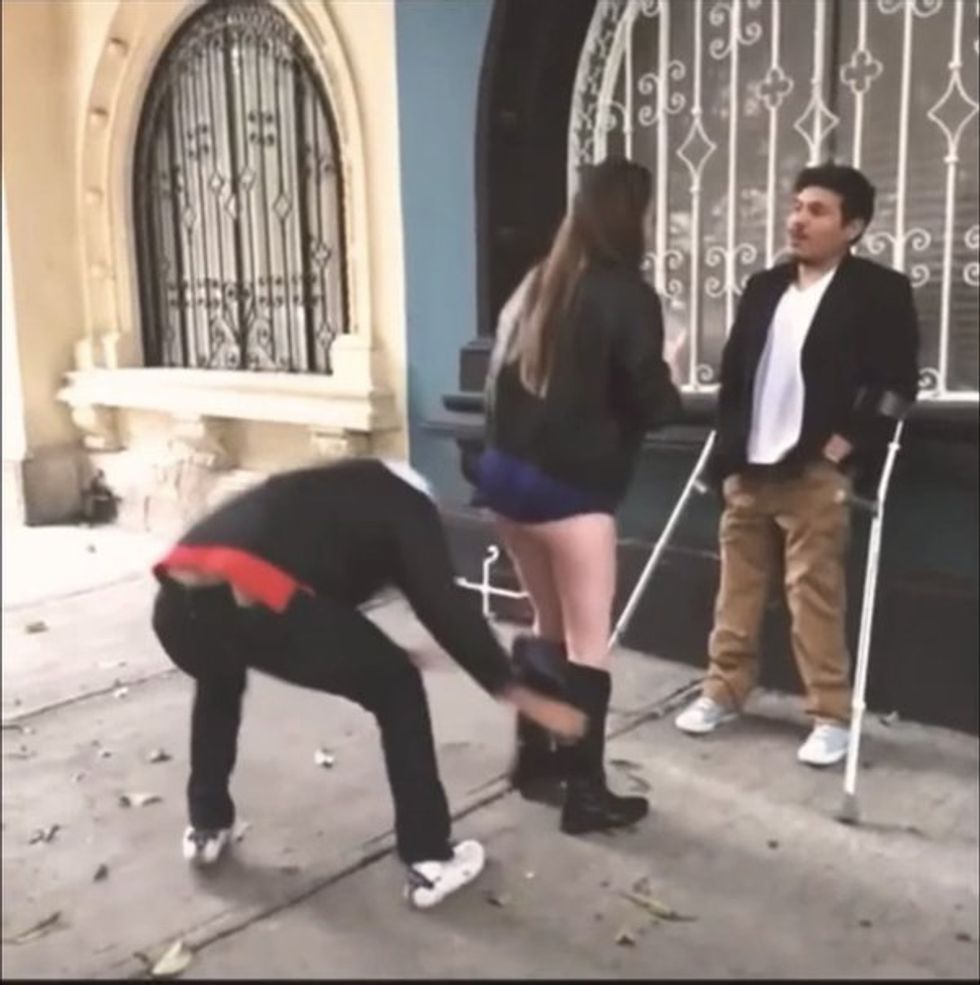When people hear the word addiction they think of drugs and alcohol. According to Google, being addicted means that one is physically and mentally dependent on a particular substance; they are unable to stop using without incurring adverse effects. People don’t seem to realize that self-mutilation, also known as self-harm, can be an addiction -- a condition of being addicted to a particular substance, thing, or action. Right there, in the definition of addiction, we see that it can be more than just a substance; it can be a thing or an addiction. Though not always as obvious, addiction to self-mutilation shares many of the same qualities of drug and alcohol addiction.
Before we look at the similarities, it’s important to know what self-mutilation is. According to the Mayo Clinic “nonsuicidal self-injury...is the act of deliberately harming the surface of your own body, such as cutting or burning”. Common forms of self-mutilation include the cutting of the skin (70-90% of self-mutilation), banging one’s head or hitting oneself repeatedly (21-44%), and burning (15-35%). In this article, I aim to explain to you all how self-mutilation fits many of the same characteristics of drug and alcohol addiction.
Emotional Triggers: According to the Mayo Clinic, “environmental factors, including...family’s beliefs and attitudes and exposure to a peer group that encourages drug use” has a tendency to influence an individual’s initial use of drugs. The same can be said of alcohol, and the same can be said of self-mutilation. I’ve read that before actually trying drugs or alcohol, a significant event -- or a series of events -- causes an emotional response. Users turn to drugs and alcohol to cope, and self-mutilation can be, and often is, used in the same way.
Self-harm typically involves a great deal of emotional build-up. We bottle up the thoughts and our feelings we have associated with stressful events. Contrary to popular belief, people who self-harm don’t wake up one morning and decide they want to take those actions. It’s a gradual build-up, and there is usually one specific event that pushes a person to inflict physical harm.
I was thirteen when I stumbled upon the self-harm method of cutting. I’d been struggling in school and there were problems at home. I’d been stressed for weeks, but I’d somehow managed to keep myself together. Then my grandmother died, and I felt like I couldn’t cope with anything anymore. My story of finding self-harm is one for another time, but my start was associated with the emotions I had at the time. And my continued use is always associated with my frustration, my stress, and my anger.
Tolerance: The National Institution on Drug Abuse explains that “when drugs...are used repeatedly over time, tolerance may develop. Tolerance occurs when the person no longer responds...in the way that person initially responded…. It takes a higher dose...to achieve the same level of response achieved initially.” Though the NIDA is referring to drugs, tolerance can occur in those who self-harm. As previously mentioned, self-harm is often used as a coping mechanism, and it is often a repeated form of coping. As the person continues to face stressful situations they may continue to rely on their prefered method of self-mutilation as a way to escape or relieve their stress. Eventually, they may feel that the frequency of their harming or their method no longer provides them with the same relief it did in the beginning.
I started small. Bent paper clips, safety pins, and push pins. Occasionally a sewing needle. After a few months, that wasn’t enough. It didn’t do anything for me; it didn’t make me feel better. So I moved on to disposable razor blades, and when that stopped working I moved to straight-edge blades from box cutters.
Dependence: Dependence can also occur in those who self-harm. The NIDA states that “dependence develops when the neurons adapt to the repeated...exposure and only function normally in the presence of the drug.” In terms of self-harm, the drug is the action of physically harming our body and the feeling that it brings. Dependence comes from the release of dopamine, which is released when we’re injured. For many, this release can be soothing. Dopamine is just like other chemicals, and it is possible for the body to become accustomed to its release; it’s possible to continuously develop a higher tolerance. Those who self-harm may find that they need a higher degree of pain in order to receive the same initial soothing feeling from dopamine. They may also begin to feel that self-harm is the only way to avoid stress and anxiety.
For the longest time -- more than five years -- I felt that the only way I could get through a stressful day was to pull out my blade. No other coping mechanisms that I knew of could make me feel as relaxed. I started caring my blade with me everywhere and would run to the bathroom as soon as I felt my anxiety start to rise.
Denial: Not all addictions involve denial, but it is possible. People who self-harm may deny having a problem for a variety of reasons depending on their circumstances -- they may not want to look weak or unable to handle the situations they’re facing; some don’t want to admit to an addiction because they’re afraid of losing their primary source of stress release. And finally, some might deny having an addiction because they don’t want to be helped or they don’t believe that they have a problem.
Withdrawal: Withdraw is the unpleasant physical reaction that comes with stopping an addictive drug. When those who self-harm try to cease their actions, they often find that they have cravings. They feel tingles or pain in the areas where they typically harm. They miss their method of coping, and sometimes they feel physically ill from trying to stop -- sweats, stomach trouble, migraines, fever, vomiting -- much like those suffering withdrawal from drugs or alcohol.





 Going to the cinema alone is good for your mental health, says science
Going to the cinema alone is good for your mental health, says science












 women in street dancing
Photo by
women in street dancing
Photo by  man and woman standing in front of louver door
Photo by
man and woman standing in front of louver door
Photo by  man in black t-shirt holding coca cola bottle
Photo by
man in black t-shirt holding coca cola bottle
Photo by  red and white coca cola signage
Photo by
red and white coca cola signage
Photo by  man holding luggage photo
Photo by
man holding luggage photo
Photo by  topless boy in blue denim jeans riding red bicycle during daytime
Photo by
topless boy in blue denim jeans riding red bicycle during daytime
Photo by  trust spelled with wooden letter blocks on a table
Photo by
trust spelled with wooden letter blocks on a table
Photo by  Everyone is Welcome signage
Photo by
Everyone is Welcome signage
Photo by  man with cap and background with red and pink wall l
Photo by
man with cap and background with red and pink wall l
Photo by  difficult roads lead to beautiful destinations desk decor
Photo by
difficult roads lead to beautiful destinations desk decor
Photo by  photography of woman pointing her finger near an man
Photo by
photography of woman pointing her finger near an man
Photo by  closeup photography of woman smiling
Photo by
closeup photography of woman smiling
Photo by  a man doing a trick on a skateboard
Photo by
a man doing a trick on a skateboard
Photo by  two men
two men  running man on bridge
Photo by
running man on bridge
Photo by  orange white and black bag
Photo by
orange white and black bag
Photo by  girl sitting on gray rocks
Photo by
girl sitting on gray rocks
Photo by  assorted-color painted wall with painting materials
Photo by
assorted-color painted wall with painting materials
Photo by  three women sitting on brown wooden bench
Photo by
three women sitting on brown wooden bench
Photo by 
 Photo by
Photo by  Photo by
Photo by  Photo by
Photo by  Photo by
Photo by 


 people sitting on chair in front of computer
people sitting on chair in front of computer











